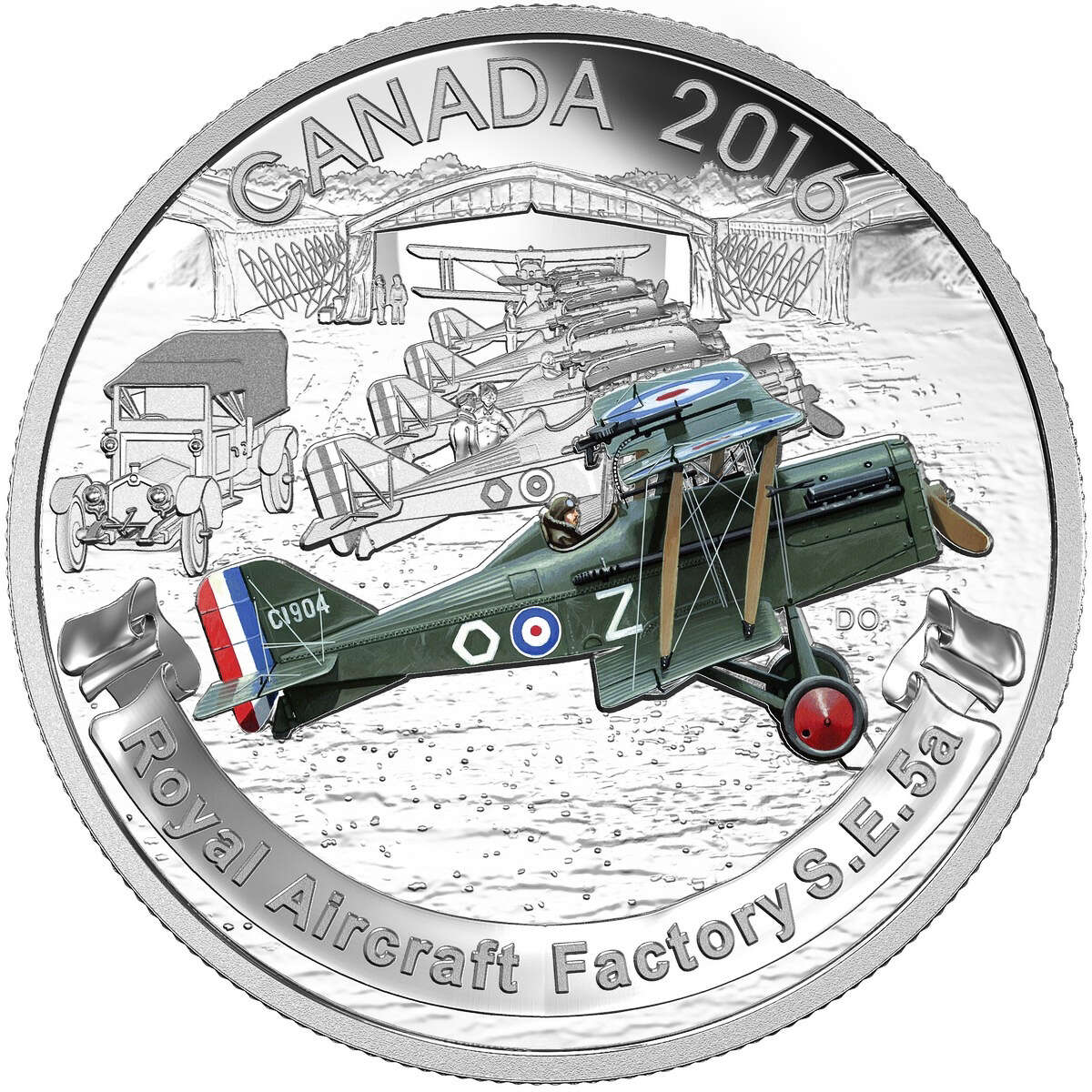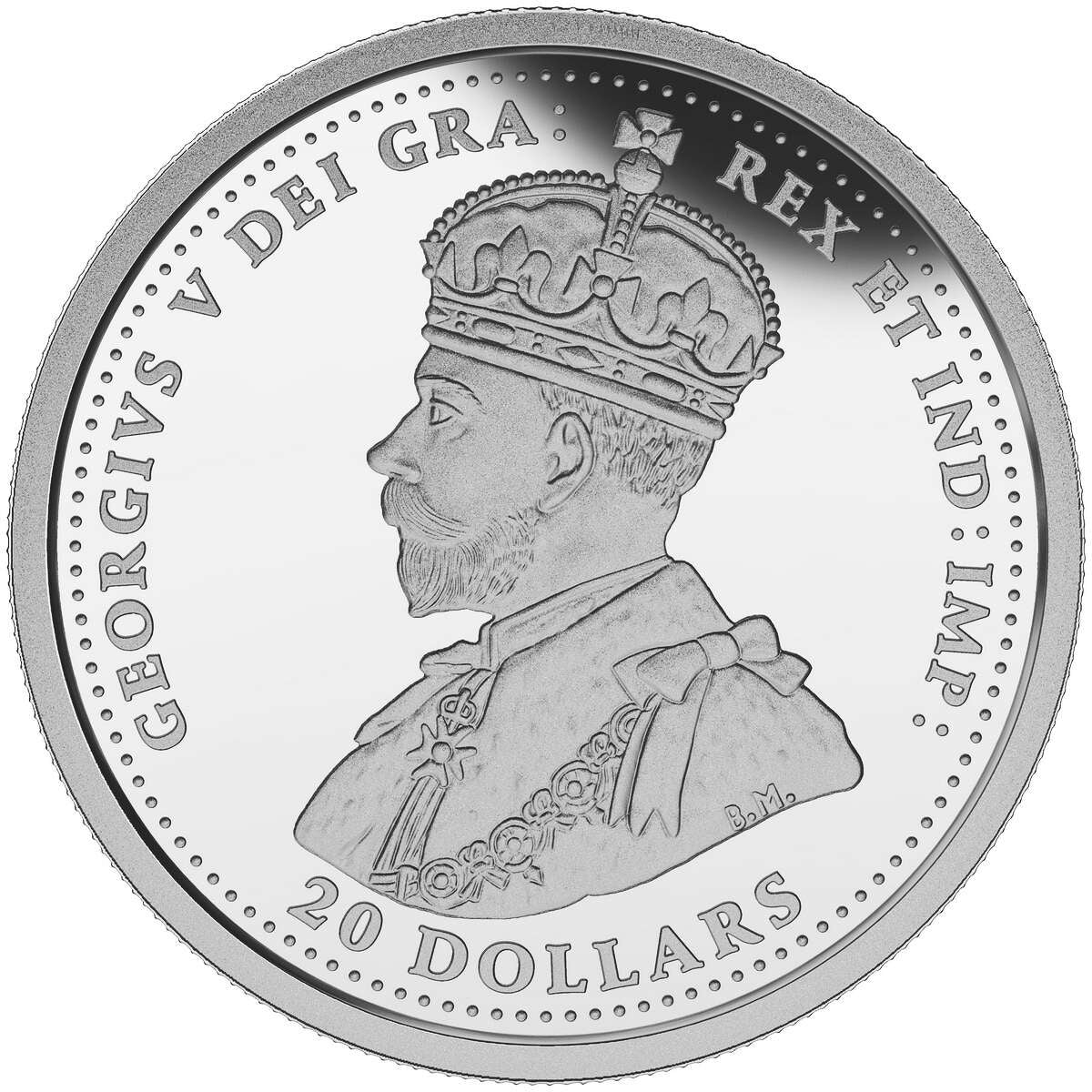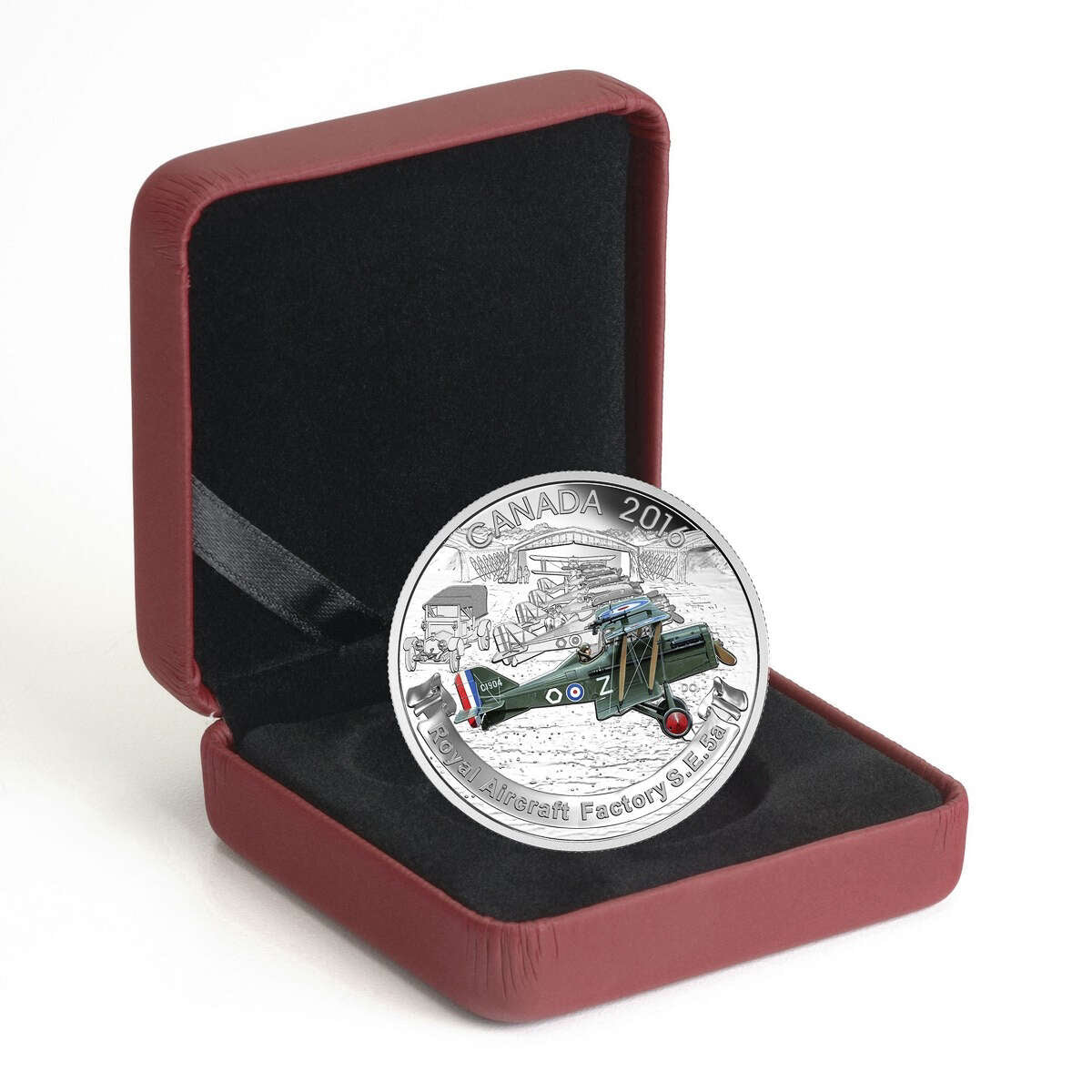Description
This 2016 $20 fine silver coin is the first coin in the Aircraft of the First World War Series. The coin artistically creates a striking contrast using a near flawless proof finish and selective colour. The coin honors the role the Royal Aircraft Factory S.E.5A that played an important role in reshaping warfare and redefining industry and transportation. The coin weighs just over one ounce of pure silver, and has a limited mintage of 7,500 coins. As a pure silver coin struck by the Royal Canadian Mint, this item is HST/GST exempt.
The Design:
The design by Canadian artist David A. Oram features an engraved depiction of an airfield where a squadron prepares for takeoff. A truck is parked behind five Royal Aircraft Factory S.E.5a aircraft, which have lined up in front of several hangars. The plane in the foreground is striking, with the use of selective colour showing the biplanes dark green colour, as well of the blue, white and red roundel and tail cockade that identified the aircraft of the Royal Flying Corp. Seated in the cockpit is a Canadian pilot wearing a leather flying coat, helmet and goggles. The coin is engraved with the word "CANADA," the date "1916" and the words "Royal Aircraft Factory S.E.5a". The back design features a effigy of King George V, by Sir Edward B. MacKennal, as used on Canadian coins in the First World War period.





